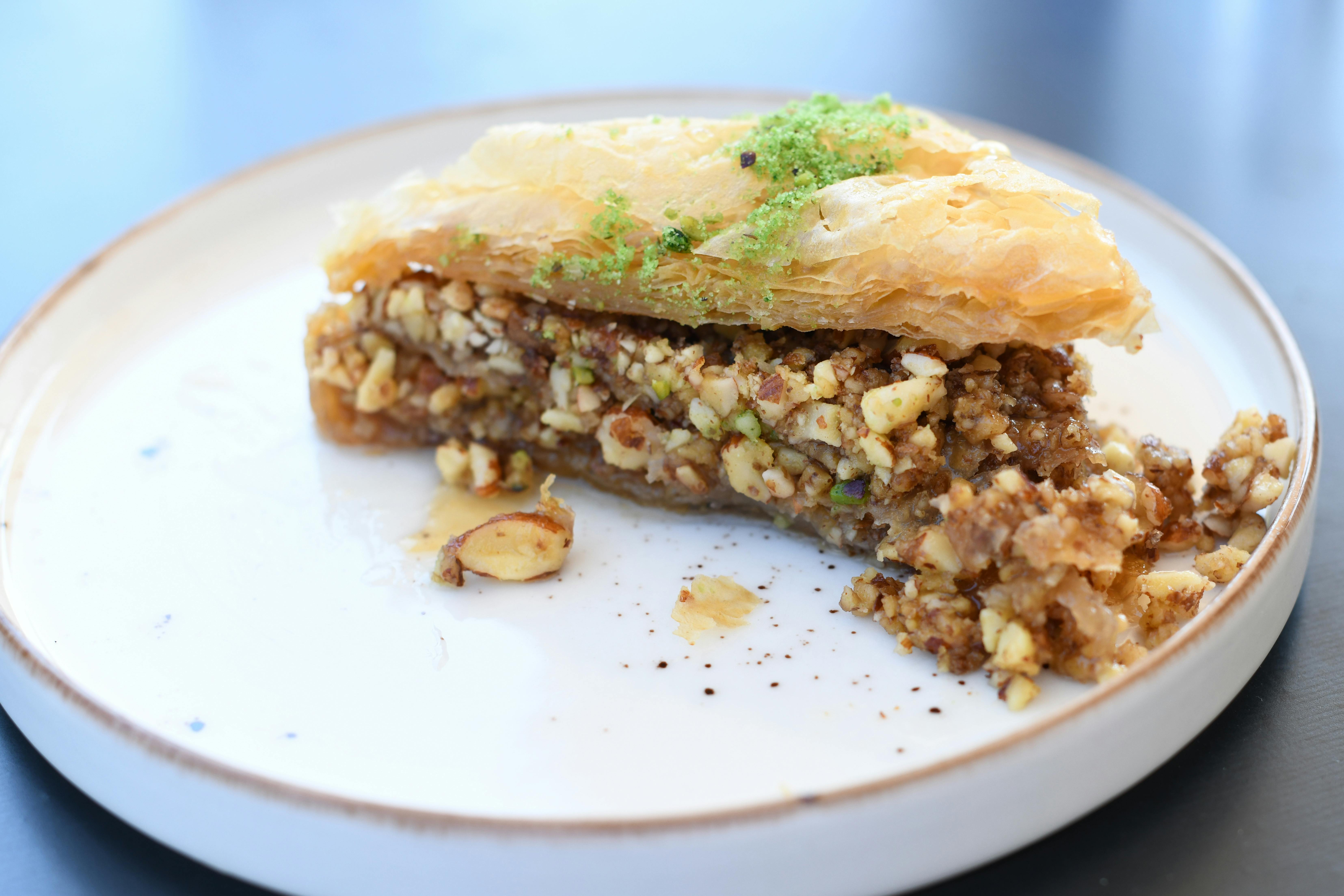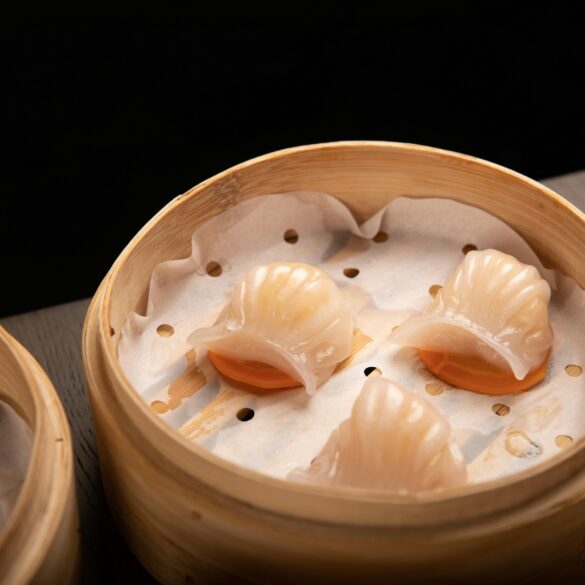Baklava Mastery: Turkish Techniques for Restaurant-Quality Desserts
Ever wondered why Turkish baklava turns heads in world-class restaurants? I’ve often found clients and culinary students leaning in, eager to know what sets apart a tray of truly memorable baklava from the sea of middling, dried-out imitations. As someone who’s worked closely with Turkish pastry chefs, I’ll be honest—getting baklava “just right” is more complex than most Western dessert techniques I’ve encountered. We’re talking about layering, syrup timing, nut choices, and an almost obsessive attention to dough quality. What really strikes me, though, is how these details are the backbone of unforgettable customer experiences, ringing in rave reviews and repeat guests1.
Why Turkish Baklava is Legendary
Back in 2016, I visited Gaziantep (often called the “world’s baklava capital”), shadowing a local pastry master whose hands flew across dough with a grace I’ll never have. Watching him, I realised just how much heritage and human touch define Turkish baklava. The crisp phyllo, golden sheen, perfectly balanced syrup—every piece is a statement. Why is Turkish baklava revered globally? Simple: centuries of refinement, absolute commitment to ingredient freshness, and relentless hands-on technique2. Western baklava recipes sometimes shortcut, but in Turkey, shortcuts aren’t allowed—quality always matters more than speed.
“Baklava is more than dessert—it is a celebration of skill, patience, and hospitality.”
Restaurants know that classic Turkish baklava evokes nostalgia, wow-factor, and deep customer loyalty. When a guest tastes real pistachio-studded baklava, they’re not just eating pastry—they’re experiencing a story, a tradition, and an occasion.
Key Insight
The authentic Turkish baklava process focuses on layering flavor, texture, and hospitality—each bite is engineered for emotional impact and culinary excellence.
Classic Techniques: What Sets Turkish Methods Apart?
Here’s what gets me: Turkish baklava makers obsess about three things—phyllo thinness, nut grind quality, and syrup clarity. Having worked in pastry kitchens in both Istanbul and London, it’s clear that Turkish restaurants rely on technique handed down for generations. You’ll rarely see industrial phyllo sheets; instead, dough is stretched by hand, rolled so thin it’s almost translucent3.
- Phyllo dough is hand-rolled with traditional oklava (a slender rolling pin)
- Nuts—usually pistachios or walnuts—are sourced from renowned regions (Gaziantep for pistachios, Karadeniz for walnuts)
- Syrup is clarified and balanced, never cloying or heavy
- Cutting is done with precision to ensure every piece is identical
Restaurant-quality baklava demands consistency—every tray must deliver the original taste memory, no matter how busy the kitchen. I sometimes question whether modern prep methods lose this, but Turkish restaurants fiercely guard tradition and tweak only within narrow bounds.
Did You Know? Gaziantep baklava is legally protected under EU law as a geographical indication—meaning only baklava made with Gaziantep pistachios and local techniques can claim the authentic name4.
Essential Ingredients: Freshness, Quality, and Sourcing
The more I work with Turkish baklava, the more I realise that ingredients mean everything. Pistachios need to be bright green, unsalted, and fresh (ideally harvested within the year). Butter should be pure, unsalted, and often clarified—a point that Western kitchens sometimes skip. Flour is selected for elasticity and protein content that matches dough tradition5. When sourcing nuts, I always advocate forming partnerships with specialty suppliers, even paying extra for that “Gaziantep guarantee”—the color, flavor, and texture it delivers is leagues ahead of supermarket options.
- Pistachios: Look for Turkish Antep varieties for restaurant authenticity.
- Butter: Prefer clarified butter for crisp texture and clean flavor.
- Flour: Use high-protein Turkish wheat when possible (standard bread flour can suffice).
- Sugar: Opt for fine-grain caster or superfine for syrup clarity.
Honestly, I reckon ingredient cost per tray might be triple a basic baklava, but guests taste the difference instantly. A colleague reminds me, “Don’t skimp or you’ll fail at the first bite.”
Step-By-Step: The Restaurant Baklava Process
Here’s where tradition meets meticulous process. When I first tried rolling phyllo dough, mine tore. It took weeks of practice and loads of guidance from Turkish bakers. For restaurants, baklava production isn’t just following a recipe—it’s a choreography of timing, texture, and temperature.
- Mix and Rest Dough: Combine flour, water, salt, and a dash of vinegar. Knead until elastic, then rest for 30-60 minutes.
- Roll Phyllo: Divide dough, then roll each piece thin, dusting with starch. Master bakers achieve ~40-50 layers.
- Layering: Brush each sheet with clarified butter. Layer half the sheets, sprinkle with nuts, layer remaining sheets.
- Cut and Bake: Using a sharp knife, portion baklava into diamonds, squares, or rectangles. Bake at 170°C-180°C.
- Syrup: Boil sugar and water, sometimes a touch of lemon. Pour over cooled baklava so it absorbs evenly.
Restaurant teams often produce baklava in small batches to control quality—a method I’ve found invaluable in preventing “stale tray syndrome.” Timing is critical; syrup must never be poured onto hot pastry (causing sogginess), nor onto cold pastry (causing crystalization). I made that mistake once—never again.
| Step | Critical Detail | Traditional vs. Restaurant |
|---|---|---|
| Phyllo Rolling | Even thickness, minimal tears | Hand-rolled always preferred |
| Layering | Precision and butter coverage | Automated layering rare |
| Nut Distribution | Even, fresh, not clumped | Restaurant quality uses top-tier nuts |
| Syrup Pouring | Correct temperature, slow pour | Timed for optimal absorption |
“The difference between good and great baklava is patience. Rushing ruins everything.”
Process Insights from Turkish Restaurants
- Baklava is often baked in copper pans for even heat distribution.
- Seasonal nut variations allow restaurants to create signature trays.
- Some chefs finish baklava with rosewater or orange blossom syrup for a floral twist.
- Portion sizes are tailored for customer demographic—smaller for afternoon tea, larger for post-feast dessert.
Personal Takeaway
Having made baklava under pressure, I’d say the best advice is: quality beats quantity. Even big-name restaurants would rather sell out early than risk serving limp, day-old pastry.
Presentation, Service, and the Customer Experience
Let me clarify something I learned the hard way: baklava is a customer experience, not just a dish. The difference between a forgettable meal and a show-stopping finish is, by and large, the way baklava is served. Leading Turkish restaurants invest in serving rituals—think silver trays, elegant plating, and often a flourish of clotted cream or ice cream. When I hosted baklava tastings at my pop-up, guests snapped photos before the first bite. Social media is now the second plate, and baklava is a star.
- Individual pieces are arranged geometrically—never haphazardly.
- Garnishes (crushed pistachio, edible rose petals) add visual “wow.”
- Accompanying drinks (Turkish coffee, tea) enhance the tradition.
- Staff may briefly explain the baklava origin story, deepening the experience.
For restaurants, baklava isn’t background—it’s the crescendo. I’ve consistently found that the presentation itself prompts table-wide discussion, repeat orders, and glowing online reviews6. Small touches—warm serving temperature, a dusting of nuts—are surprisingly powerful. Is it fussy? Of course. Worth it? Absolutely.

Tips for Troubleshooting and Consistency
Here’s the thing: Even the best Turkish baklava comes with headaches. While many have pinned down the basics, kitchen realities throw curveballs—humidity, butter temperature, baking variations, and the unpredictable restaurant rush all test even seasoned pros. I’ll be completely honest, troubleshooting baklava is a skill all its own, and I still adjust after every batch.
- Tough, chewy phyllo? Check your flour protein and resting time.
- Soggy baklava? Pour syrup only when pastry is cool.
- Poor nut flavor? Re-evaluate nut freshness—stale nuts kill baklava.
- Greasy finish? Clarify your butter and brush in thin, even layers.
Clients always ask, “Why does my baklava get tough overnight?” My mentor always answered, “Temperature is everything. Store at moderate room temp, never the fridge.” Temperature management is a crucial nuance missed by most recipes. Here’s a useful table I’ve carried over from my own kitchen tests:
| Problem | Likely Cause | Quick Fix |
|---|---|---|
| Phyllo Tears | Not enough starch / dough not rested | Rest dough; dust with more starch |
| Syrupy Sogginess | Hot syrup on hot pastry | Cool pastry before pouring syrup |
| Dull Flavor | Old nuts, weak syrup | Source fresher nuts; use lemon in syrup |
| Greasy Texture | Butter not clarified | Clarify butter before use |
I used to obsess about making every tray perfect; now I focus on consistency. One more thing—don’t fret small imperfections. Real Turkish baklava always shows a few human touches, and diners love that authenticity.
“Baklava should taste like the hand that made it—imperfect, but full of care.”
Expert Insights and Modern Adaptations
Let’s talk evolution. Turkish baklava is grounded in tradition, but modern restaurants experiment with fusion—think chocolate-dipped baklava, spiced nut fillings, vegan butter alternatives, and gluten-free flours. I’m not entirely convinced by every adaptation, but some contemporary spins are surprisingly well received. Social media has nudged chefs toward visual experimentation, but the core remains: crisp phyllo, fresh nuts, balanced sweetness.
- Chocolate hazelnut baklava is making waves in larger cities.
- Gluten-free phyllo dough: tough to master, but a growing market.
- Savory baklava – cheddar or feta with pistachios for brunch menus.
- Vegan baklava using coconut oil in place of butter.
Innovation vs. Tradition
I’m partial to tradition, but the best Turkish restaurants now combine both—classic baklava anchors the menu, while modern twists invite foodie adventurers and Instagram influencers.
“There are as many baklava recipes as there are Turkish grandmothers. Find your own balance.”
Featured Snippet: What Makes Turkish Restaurant Baklava Unique?
Turkish restaurant-style baklava stands out for its paper-thin hand-rolled phyllo, generous fresh pistachio layer, clarified butter brushing, and perfectly timed syrup application. Served with style, it delivers both taste and theater to diners—a hallmark of Turkish hospitality7.
Did You Know? Istanbul’s famous Karaköy Güllüoğlu baklavacı produces up to 1.5 tons of baklava daily, shipping it worldwide while maintaining traditional technique8.
Discussion Prompt
If you could change one thing about your restaurant’s baklava, what would it be? More layers, different nuts, a creative presentation? Reflect on how innovation can enhance tradition without losing authenticity.
References & Further Learning
Before I wrap up, let me step back for a second. The world of Turkish baklava is a living tradition; every restaurant interprets, adapts, and perfects. What started as curiosity for me—how do the best in Turkey do it?—became a journey of craftsmanship and hospitality lessons I apply daily. Whether you’re a professional chef, an ambitious restaurant manager, or a passionate home cook, Turkish baklava invites you to elevate dessert from simple sweet to show-stopping experience.
“Serve baklava with pride—it carries centuries of hospitality and joy in every piece.”
Call to Action
Ready to transform your restaurant’s dessert menu? Invest in traditional Turkish baklava techniques and create desserts that live in customer memory—and on their Instagram feeds. The next step is yours.
Future-Proofing and Update Strategy
Looking ahead, Turkish baklava remains both evergreen and flexible. As dietary trends shift, ingredient sourcing evolves, and global culinary tastes expand, keep refining your process: trial new flours, test alternative syrups, update presentation for seasonal or cultural relevance. Each year, new ideas emerge from Istanbul’s bustling baklavacı scene, and keeping in touch with these changes will future-proof your offerings. Even just swapping nut varieties or adjusting syrup acidity can keep the palette fresh for repeat diners. At this point in time, it’s about balancing tradition with culinary agility.
Did You Know? During Turkish Bayram holidays, baklava orders in Istanbul triple, requiring bakers to work overnight to meet demand—proof that the pastry thrives as both tradition and trending treat9.
Let that sink in—a centuries-old dessert still dominating the modern restaurant scene. Few dishes do that.
References



